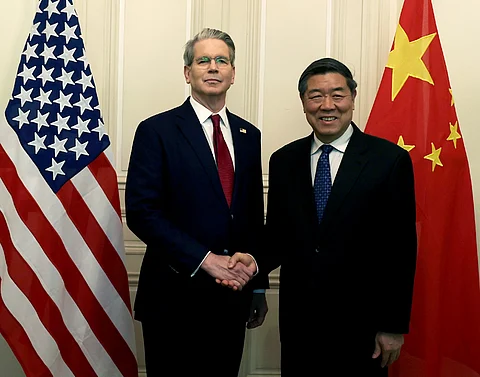

New agreement pushes August deadline to November, though Trump’s Russia ultimatum could still unravel progress.
The United States and China agreed on Tuesday to extend their existing 90-day tariff truce by an additional 90 days following two days of talks in Stockholm, Sweden. The decision comes amid an ongoing effort to de-escalate trade tensions between the world’s two largest economies.
The meetings, which concluded on Tuesday, were led by U.S. Treasury Secretary Scott Bessent and Chinese Vice Premier He Lifeng, with U.S. Trade Representative Jamieson Greer also in attendance. The talks sought to maintain current tariff levels and prevent a return to the aggressive trade policies that rattled global markets earlier this year.
Under the extension, the United States will continue imposing a 30% tariff on Chinese imports, while China will maintain its 10% tariff on U.S. goods. This pause averts a reversion to the peak tariff rates seen in April 2025, when Washington imposed tariffs as high as 145% and Beijing retaliated with tariffs of up to 125%. The original truce, agreed to in Geneva on May 12, had been set to expire on August 12; it will now remain in effect through mid-November.
While the extension signals a willingness by both nations to stabilize trade ties, its future is uncertain. The announcement came just a day after President Donald Trump dramatically shortened his ultimatum to Russia—giving Moscow just 10 days to agree to a ceasefire in Ukraine or face sweeping secondary sanctions. Among those threatened penalties are 100% tariffs on countries that continue to purchase Russian energy, including China.
Beijing’s agreement to extend the tariff pause despite Trump’s threats suggests it is not currently treating the ultimatum as imminent policy. Russian officials have also largely brushed off the threats, with markets reacting calmly.
Some analysts have pointed out that it would be politically and economically risky for the United States to launch a fresh tariff war with China so soon after being forced to retreat from the initial April escalation. That round had triggered severe disruptions across global supply chains and financial markets—including U.S. bond markets that are essential for servicing America’s soaring national debt.
With the truce now extended, both Washington and Beijing have bought more time to negotiate a formal trade agreement, though escalating geopolitical tensions could still derail progress.